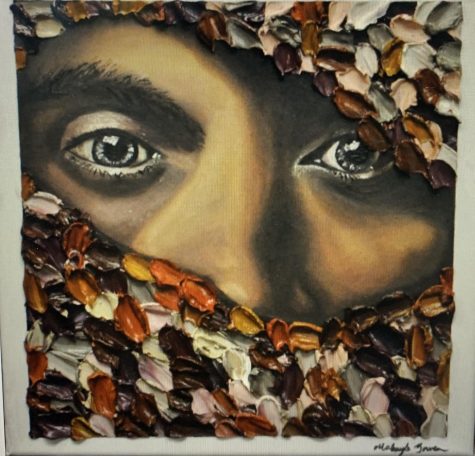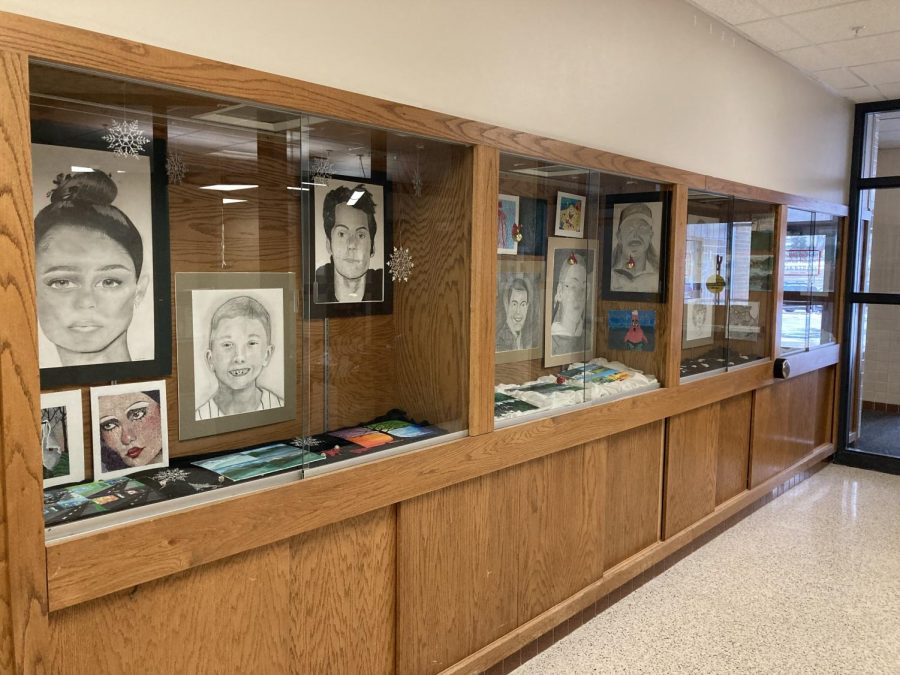Coloring success
Staff writer Lauren Ritz explores the ins and outs of arts in schools, and the impact that art has on students.
Student art, no matter the medium, can be very beneficial in creating a well-rounded learning environment.
In preschool, almost every student in the country spent hours on various arts and crafts. Most of those projects consisted of pink crayon flowers and sloppily drawn stick figures on pieces of printer paper. Fortunately, as students grew older, those stick figures gradually turned into true drawings of people: complete with noses, clothing, and hair that would not suggest electrocution. Unfortunately, the moment students hit middle school, the required amount of time in class dedicated to the visual arts, and almost all other fine arts, goes down significantly. When high school rolls around, the amount of time allotted only to fine arts dips to almost zero. This is quite the dilemma because instruction in the fine arts is crucial for students to have a well-rounded education. In addition, as they grow older, the fine arts can supply students with many benefits both inside and outside of school. Due to this dilemma, high schools need to do more to advocate for the fine arts, and the benefits they provide in academic skills, social skills, preparedness for the workforce, and life after retirement.
As students go through high school, education in the fine arts can be very helpful. Though simply participating in the arts does not directly increase test scores or academic success, incorporating the arts when teaching core subjects can be advantageous. According to “Voices from the Field: Teachers’ Views on the Relevance of Arts Integration”, a 2012 research study done by Kerrie Bellisario, Lisa Donovan and Monica Prendergast, integrating the arts when teaching a lesson in core subjects, such as math or language arts, causes students to become more engaged, shows them a variety of strategies for learning new content, and helps them to relate the material to real-life situations. It can even renew a teacher’s commitment to teaching, ultimately helping the students. Fine arts classes can serve as a break from learning, so when students have time to take a break, their brains use that time to process memories and to solidify learned material. Moreover, this time with the arts can also help students to excel in non-academic ways.

Fine arts classes are a big player in developing skills such as creativity, risk-taking, planning, collaboration, and persistence. Aside from these qualities, the fine arts can also help students to make gains in social skills, such as empathy. Empathy is a key player when interacting with others because the ability to see something from another person’s point of view increases clarity of communication and understanding between two people. In fact, a study published on February 4, 2017 by Ladislav Kesner and Jiri Horacek, titled “Empathy-Related Responses to Depicted People in Art Works”, stated that even exposure to paintings can increase empathy. Seeing someone in pain, even if that someone is portrayed in a painting, can cause the viewer to experience a similar sensation. This effect applies to mental suffering as well as physical suffering, allowing students to feel and experience things they normally wouldn’t in real life. During December of 2019, the Andrew W. Mellon Foundation even gave the Minneapolis Institution of Art 750,000 dollars to open up the Center for Empathy and the Visual Arts, furthering the idea that the arts and empathy go hand in hand.
Beyond helping students with less concrete goals, such as increased empathy, fine arts classes can also aid students in making more tangible achievements, especially those of low socioeconomic status. As stated in a research report published in March of 2012 by James S. Catterall, Susan A. Dumais and Gillian Hampden-Thompson entitled “The Arts and Achievement in At-Risk Youth: Findings from Four Longitudinal Studies”, involvement in the arts causes students to become much more civically engaged by reading newspapers, participating in student government, and volunteering. Furthermore, the report exhibits graphs demonstrating that arts participation also leads to a lower high school dropout rate, as well as an increase in college enrollment, voting registration, and GPA. But, the value of a fine arts education stretches even further and can benefit students in their work lives too.
In the workforce, arts education is significantly more important than one might think. “The American Skills Gap is Real”, an article published by Adecco on February 12 of this year, stated that in a survey previously conducted, 44 percent of executives felt that Americans are lacking essential “soft skills” such as creativity, collaboration, and communication. It was also affirmed that soft skills are much harder to learn than other more technical, teachable skills. Likewise, “Ready to Innovate”, a research report published by James Lichtenberg, Christopher Woock, and Mary Wright on September 30, 2008, revealed that employers believe creativity to be a very important skill in job candidates, but 85 percent of these employers can’t find the creative job-seekers they need. A great solution to this would be simply requiring more fine arts classes in high school. However, though the report states that over 90 percent of superintendents believe that the dramatic arts, creative writing, music, and the studio arts all increase creativity, only 54 percent of schools require creative writing, while 17 percent of schools require music and less than 10 percent of schools require the dramatic and studio arts. If schools were to simply require more fine arts classes, students would find themselves set up for success in the workforce, and could continue reaping arts-related benefits even after retirement. “Engaging with the arts may help you live longer”, an article published on January 10, 2020 by Vishwadha Chander, covers a study demonstrating that the arts can actually increase longevity. Almost half of the study’s participants who died had never participated in cultural activities, and as the regularity of arts involvement went up, the number of deaths went down. Becoming involved in the arts during high school can help students to develop a life-long habit, one that can even help them live longer.
From crayon drawings to squealing recorders, the fine arts are an integral part of education; a part that schools need to do more to promote and teach. Aside from the sheer enjoyment participation in the fine arts provides, the wide array of improvements in a students’ life, from elementary school to retirement, proves just how important the arts are. Because in the end, a poorly drawn tree can be much more than just a poorly drawn tree.

Hi Everyone! My name is Lauren Ritz and I'm a senior editor-in-chief for the Lantern. When I'm not editing articles and cooking up graphics, I enjoy playing...

